Into the Wild: Why tourists are risking their lives to visit a bus
- Published
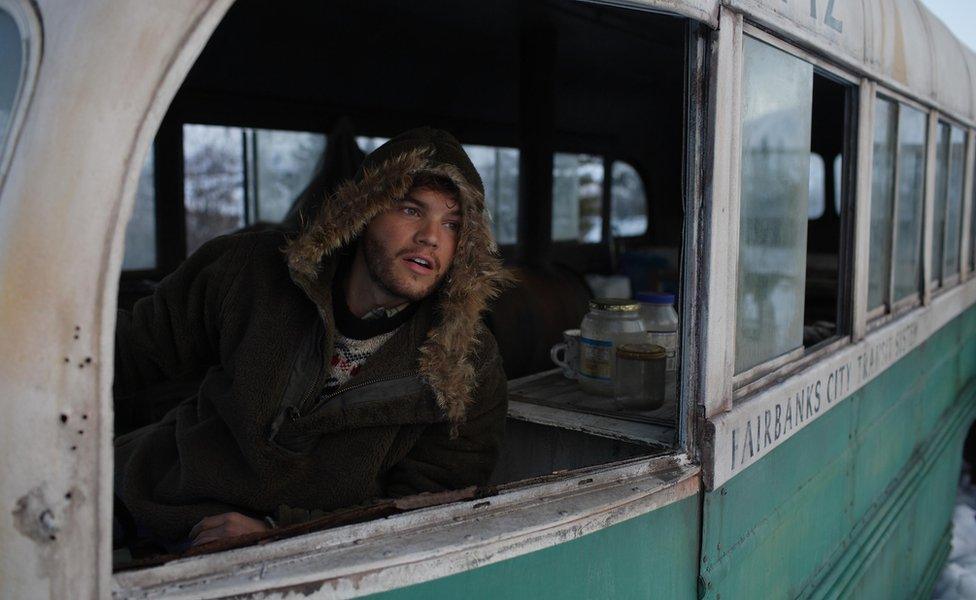
Emile Hirsch portrayed Chris McCandless in the 2007 film Into The Wild
Almost 30 years ago, a young American graduate gave all his belongings to charity and set off into the wilderness, alone, to invent a new life for himself.
After reaching Alaska, Chris McCandless settled in an abandoned Fairbanks bus usually used by hunters. He was living his dream of living off the land. But within four months, he had died.
His diary entries inspired a book and then a film, both titled Into the Wild. The book and film have since gone on to influence a new generation of people who want to escape the nine-to-five life and set out in search of adventure in the wilderness.
Many of these people attempt to reach the bus and witness the stunning scenery and deserted location where McCandless, who also went by the name Alexander Supertramp, spent his last months. But in doing so they are putting their lives at risk, as a group of tourists found out this week.
Despite increasingly stark warnings by the authorities, people still appear determined to visit.
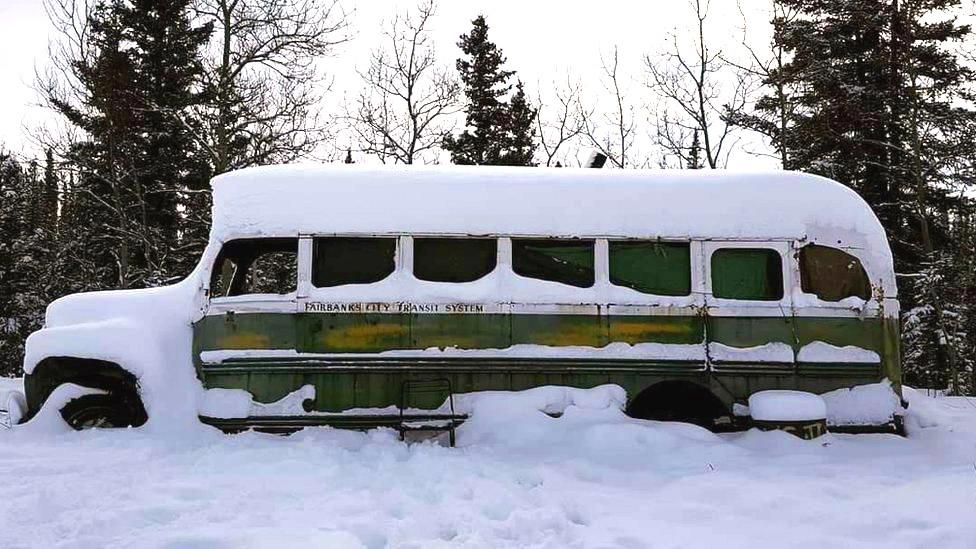
The bus is fairly isolated with trekkers having to cross the Teklanika River
The bus is found deep in central Alaska, at the northern end of Denali National Park. The closest town is about 30 miles away and to reach it, visitors have to cross the fast-flowing Teklanika River.
Two people have died trying to do so. The most recent was newlywed Veramika Maikamava, 24, who was killed when she was swept underwater while trying to cross the river with her husband last July.
Then earlier this week, five tourists looking for the bus were rescued - one with frostbite - after becoming lost 13 miles from where they were supposed to be.
There were 15 bus-related search and rescue operations by the state between 2009 and 2017. So what keeps people coming to the bus despite the danger?
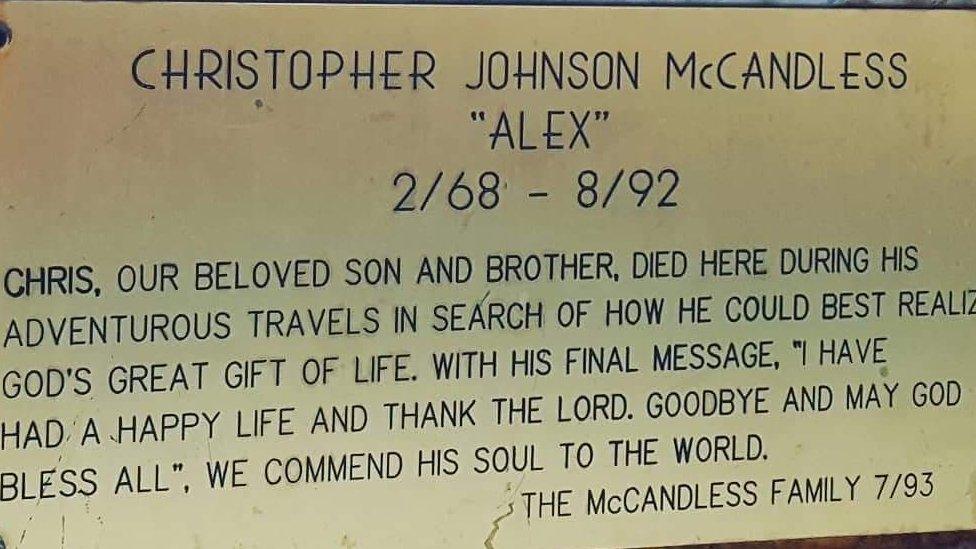
McCandless's family have visited the bus and left a memorial plaque
"There's the idea of running away from society and not being bound by what everybody wants from you and getting lost in the wilderness and connect with yourself again," says Martina Treskova, who travelled to the bus with her now-husband.
"I think everybody has this. We all feel like we understand him," she tells the BBC.
"My dad was asking me, 'so you basically slept on a bed where somebody died?' and I said 'yeah', but it didn't feel like that. We felt connected to him and felt really happy there."
Ms Treskova says she was aware of the danger involved in getting to the bus but says she had prepared for the challenge and if anything felt like a bad idea, the couple wouldn't have done it.
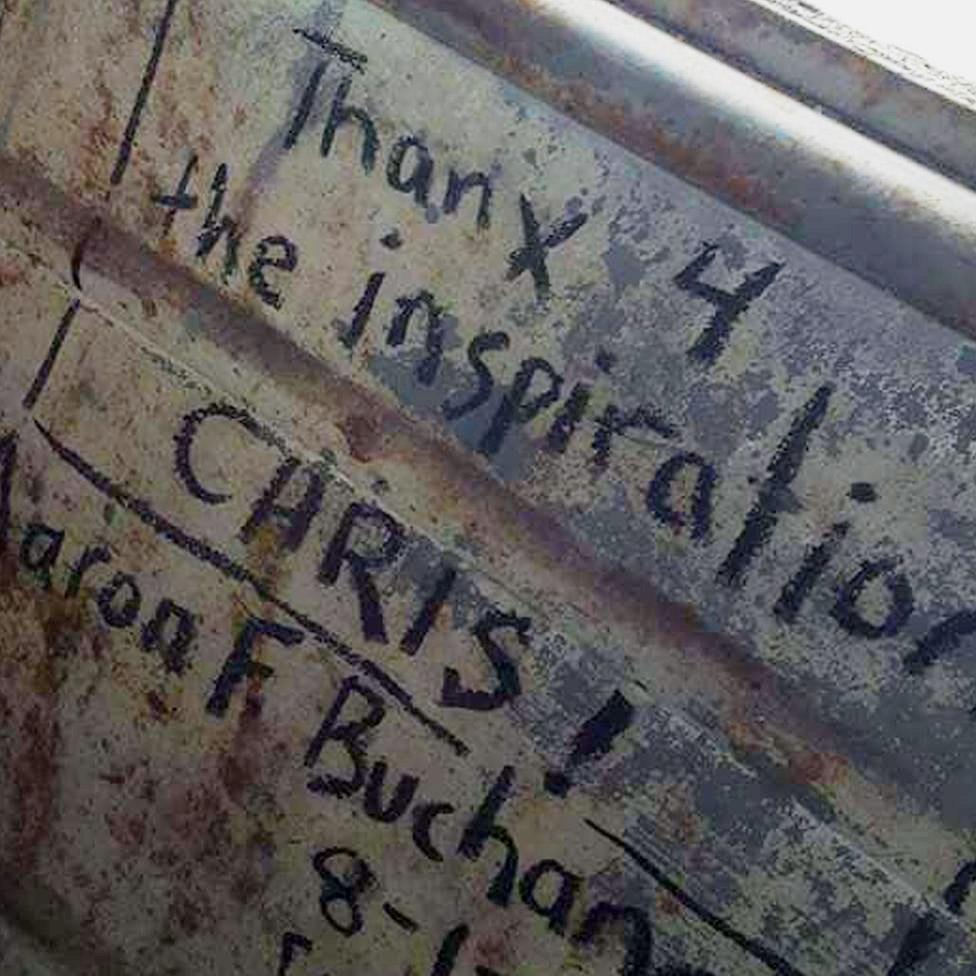
Tributes to McCandless have been left inside the bus

McCandless was passionate about leading an outdoor life. In the months after selling his belongings, he kayaked a section of the Colorado river and hitchhiked his way across the US.
It was this passion for travel and the outdoors that enticed Gavin Brennan to pick up the book 'Into the Wild' by Jon Krakauer.
Then one day he booked a three-week-long trip to Alaska. "I was willing to risk it all to see and feel the magic and it really is magic at the bus," he said.
"My Alaskan journey had many twists and turns from snowstorms to moose encounters and bear prints. I left my book on Chris's bed in the bus vowing never to return and my journey into the Alaskan wilderness was done."
Some locals, however, view it differently.
"I would say that most people who live out here want the bus gone," Jon Nierenberg told the Anchorage Daily News. "I used it many times over the years, and it was good to have it there in case someone got into trouble and needed an emergency shelter.
"I think it should be hauled out and put somewhere in [nearby] Healy where people can see it safely."
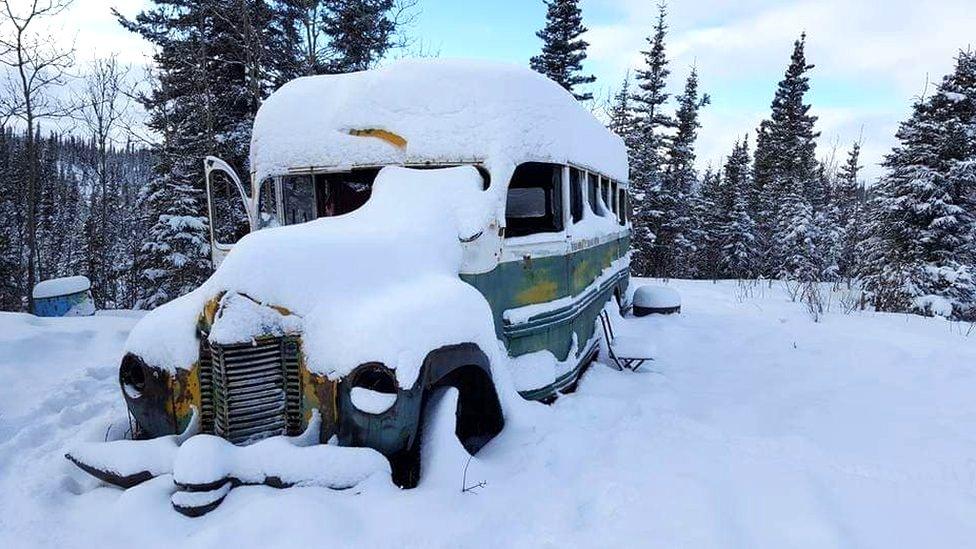
Some tourists have found an alternative to visiting the bus
Clay Walker, the Denali borough mayor, wonders whether removing the bus will solve the issue. "Maybe there will always be a segment of people who are drawn to the site and want to test themselves against Alaska's elements." He suggested a sign could be erected with river crossing tips.
"I do think there's this perception that anyone who goes out there is this diehard follower of McCandless," says Paxson Woebler, an Alaskan who has his own website about trekking in the state. "It's not really the case.
"The debate will probably be moot in the long run, as I'd imagine someone will eventually take matters into their own hands and destroy it. This is Alaska after all."
These days, the bus is in poor shape: the number on its side has been shot out and the windows are all gone.
"The roof is starting to rust through, meaning that it won't be long before it's unusable as a backcountry shelter," Mr Woebler says.
A brewery in Healy has already installed a duplicate of the bus which was used in the film. Tourists short on time choose to venture there instead of trekking to the original, and the message from locals is getting across to some visitors.
Antonette Spaan decided to visit the bus outside the brewery after talking to locals. "I've been to Alaska seven times and I have a lot of respect for Alaska and its people and basically they advise you not to go because it's too dangerous.
"It made me realise that I don't want to go first of all to a place that is unsafe, I don't want to risk my life, and I want to respect the local people.
"Unless you've been to Alaska, you really don't know what Alaska is like, what the wilderness is like and what it is like if nature is against you."